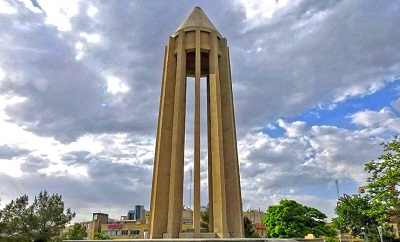Hamedan (Hamadan) with a green mountainous area in the foothills of the 3,574-meter Alvand Mountain, is in the Midwest part of Iran. The city is 1,850 meters above sea level.
Hamedan is believed to be among the oldest Iranian cities. It was one of the Median capitals, under Cyrus II (the Great; died 529 BCE) and later Achaemenian rulers, and was the site of a royal summer palace. Hamadan is mentioned in the biblical book of Ezra, and there is a tradition of Jewish association with the town. The Tomb of Esther and Mordechai is believed by some to hold the remains of the biblical Esther and her uncle Mordechai.
The city was the home of some of the great thinkers and artists of the Islamic period. The great Persian-language poet Baba Tahir was born there and whose mausoleum is located in the city. The noted physician and philosopher Avicenna died in Hamadan in 1037.
Iran’s Cultural Heritage Organization lists 207 sites of historical and cultural significance in Hamadan. The city has always been well known for handicrafts like leather, ceramics, and carpets.
Area: 628.58 Km2
Population: 554,406
Province: Hamedan
Other ethnicities: Persian, Azari, Persian Jews
Language: Persian, Azari
Tourist attractions:
– Tomb of Baba Taher
– Avicenna Mausoleum
– Ecbatana Historical Mound
– Alavian Dome
– Imamzadeh Hossein
– Qorban Tower
– Friday Mosque of Hamedan
– Hamedan Traditional Bazaar
– Hamam-e Qal’eh of Hamedan
– Museum of Natural History of Hamedan
– Stone Lion Statue of Hamedan
– Ganj Nameh of Hamedan
– Kurijan Bridge of Hamedan
– Tomb of Habakkuk the Prophet
Natural attractions: Mishan Plain of Hamedan, Sarab-e Gyan, Ali Sadr Cave
